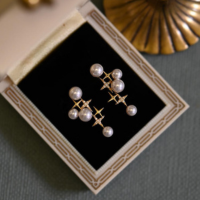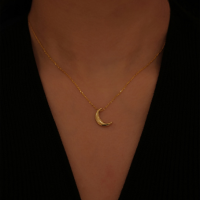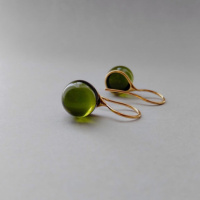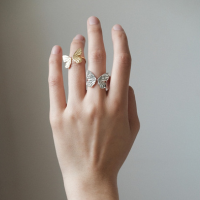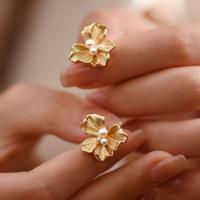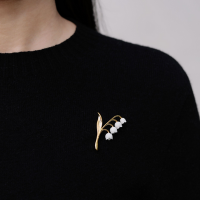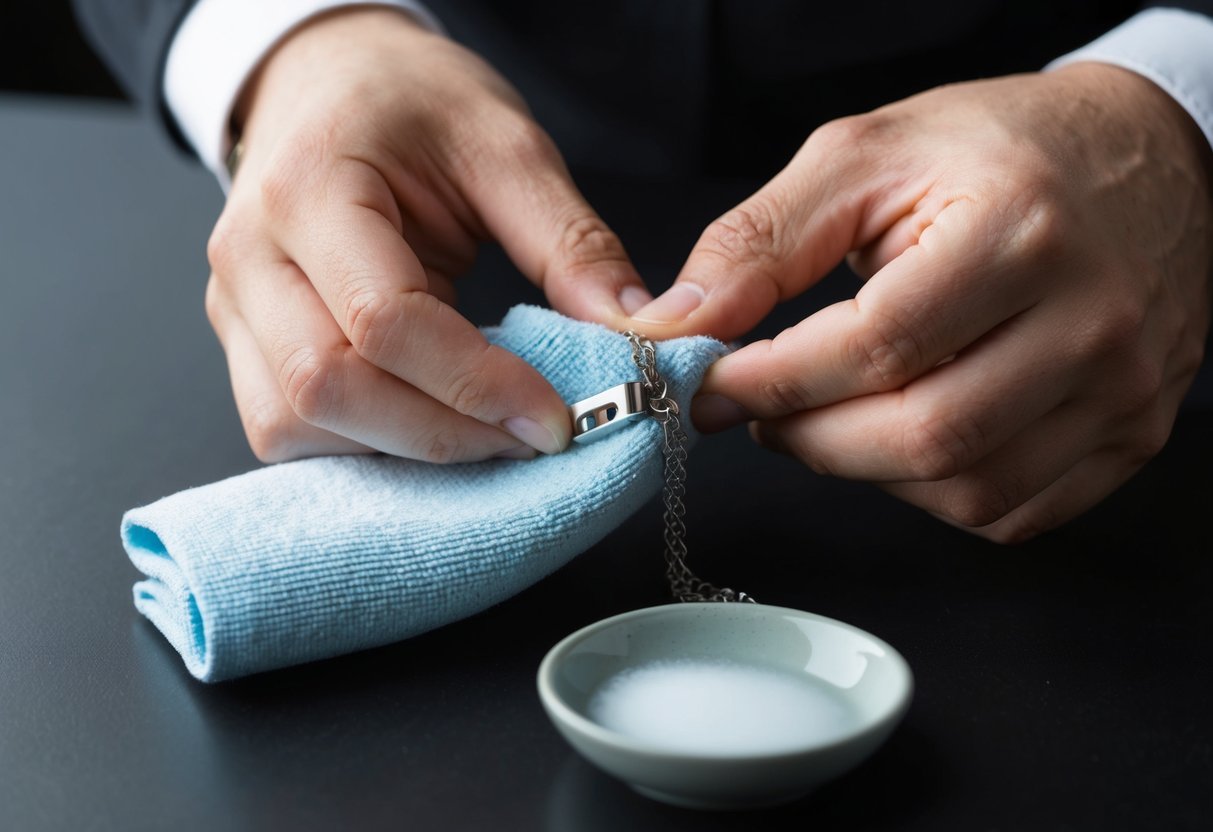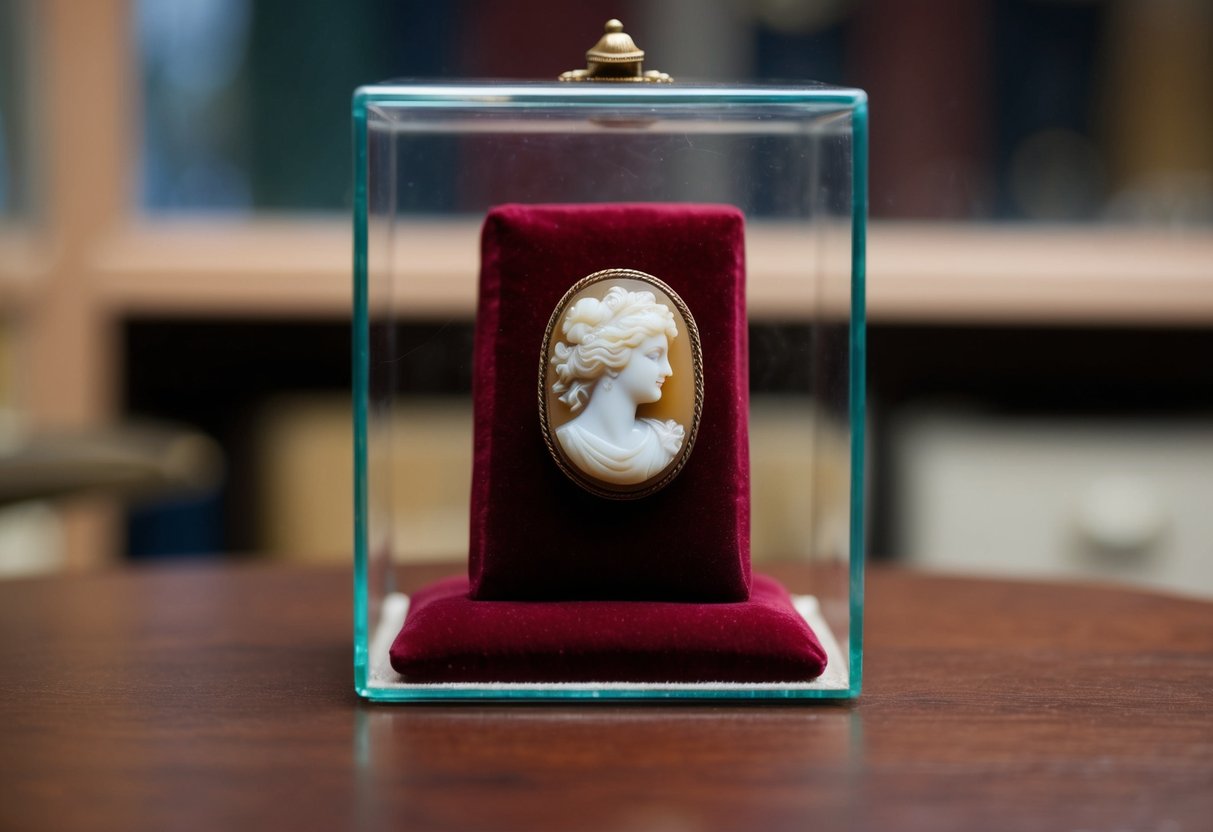
What Is a Cameo Jewelry
Check out our personalized jewelry collections! (kids drawing jewelry, coin jewelry, wire jewelry, fingerprint jewelry, handwriting jewelry, and more)
Cameo jewelry is a beautiful and timeless art form that has captured the hearts of collectors and fashion lovers alike. A cameo is a piece of jewelry with a raised image carved onto materials like shell, stone, or glass. These intricate designs often feature portraits, mythological scenes, or floral motifs, making each piece a unique treasure.
Our fascination with cameos dates back centuries, originally crafted in ancient civilizations. Over time, they have maintained their charm and elegance, proudly worn by royalty and commoners. We find joy in the rich history and craftsmanship behind each one, knowing they hold stories from the past.
As we explore the world of cameo jewelry, it's important to understand how to properly care for and incorporate these exquisite pieces into our modern lives. From classic brooches to trendy accessories, cameos can complement any style, reflecting personal taste and elegance.
Key Takeaways
- Cameos are jewelry pieces with raised images carved onto materials.
- They have a rich history and have been cherished for centuries.
- Proper care and style integration maintain their timeless appeal.
History of Cameo Jewelry
Cameo jewelry has a rich story that travels through ancient civilizations, thriving in the Renaissance era, reaching peak popularity in the Victorian age, and experiencing a fresh revival today. Each era brought its contributions to the design and significance of cameo pieces.
Ancient Origins
Cameos have been around for thousands of years, dating back to ancient Greece and Rome. These artworks were carved from gemstones like agate or onyx. Skilled artisans would carve images of deities, mythological scenes, or prominent figures.
They were not just decorative. In ancient times, cameos often held cultural or political significance. People wore them to show allegiance to an emperor or to celebrate a victory.
These early pieces were cherished not just for their beauty, but also for what they represented. Today, these ancient pieces are seen in museums and coveted by collectors, marking the beginnings of a timeless tradition.
Renaissance Revival
The Renaissance period brought a new wave of interest in cameo jewelry. Artists of this time rediscovered classical art and began creating their interpretations.
A notable boost came from the Italian city of Florence, where skilled craftsmen produced exquisite cameos. These works were celebrated for their intricate designs and exceptional artistry.
Royalty and nobility were particularly fond of cameos during this time. They became symbols of culture and wealth. Our appreciation for Renaissance cameos still thrives, with many seeking these treasures for their historical and artistic value. This era solidified cameo jewelry as a status symbol.
Victorian Era Popularity
During the Victorian era, cameos reached new heights in popularity. Queen Victoria herself adored these pieces, wearing and gifting them frequently.
Victorian cameos were known for their variety in materials and themes. Shell became a popular material due to its ease of carving. Portraits, historical scenes, and natural motifs were common.
Jewelry from this time was not just fashion; it was sentimental. Cameos often had personal significance, telling the story of a loved one or commemorating an event. This personal touch continues to endear them to us. Victorian cameos remain highly sought after by collectors and enthusiasts.
Modern-Day Resurgence
Today, cameos are experiencing a resurgence in popularity. Modern designers are reimagining these classic pieces, bringing fresh perspectives and materials into play.
Contemporary cameo artists experiment with unique materials, such as resin and synthetic stones, while still embracing traditional techniques. This blend of old and new attracts those who appreciate both innovation and history.
Many people find cameos appealing not just for their beauty, but also for their ability to tell a story. Modern cameo jewelry allows us to express individuality with timeless elegance. This resurgence is an exciting time for cameo enthusiasts, as these treasures continue to inspire and captivate us.
Defining Cameo Jewelry
Cameo jewelry often features intricate designs carved into materials like stone or shell. These pieces are admired for their artistry and often depict figures or scenes.
Material and Craftsmanship
When we think of cameo jewelry, the materials used are crucial. Traditionally, shells and stones, like agate or coral, are popular because they allow detailed carvings. Each material offers unique qualities; for instance, shells provide a beautiful contrast in colors when carved.
Craftsmanship plays a key role in creating cameos. Artists carve layers to reveal detailed images or portraits. In the past, these designs were done by hand, showing remarkable skill. Today, some are crafted using modern techniques, but the best pieces still rely on expert hands.
Common Themes and Motifs
The themes of cameo jewelry are diverse and fascinating. Common motifs include profiles of women, known as busts, and mythological scenes or figures. These subjects were popular during the Victorian era, reflecting cultural interests of that time.
Sometimes, cameos depict nature, featuring flowers, animals, or landscapes. These designs bring a touch of elegance and history to every piece. Each cameo tells a story, making it not just a piece of jewelry, but a wearable piece of art.
Types of Cameos
Cameos come in various forms, each with unique materials and history. Let's explore the beauty and characteristics of shell, agate, lava, and glass cameos.
Shell Cameos
Shell cameos are one of the most popular types. Made from shells, they often have a soft, delicate finish. The most common shells used are sardonyx and carnelian.
Crafting a shell cameo involves carving the design on the thin upper layer of the shell. This reveals the contrasting layers underneath. This type of cameo is known for its warm colors, typically featuring shades of peach, pink, or orange. They often depict profiles of figures or intricate scenes.
Collectors value shell cameos for their beauty and the skill required to produce them. They're prized for their detailed artistry and historical value.
Agate Cameos
Agate cameos are crafted from agate stone, a variety of chalcedony. These are known for their striking, vibrant colors and smooth surface. Agate's natural layers offer a perfect medium for creating depth and contrast.
The stone's hardness makes agate cameos durable and long-lasting. Jewelers carefully carve intricate designs into the layers, often highlighting classical figures or mythological themes.
Due to the varied hues available, from deep reds to blues, agate cameos can be highly personalized. This has made them a favorite among collectors who appreciate the blend of natural beauty and skilled craftsmanship.
Lava Cameos
Lava cameos are carved from lava stone, typically found near volcanoes like Vesuvius. They have a muted, earthy appearance with shades of grey, brown, or black. This gives them a distinctive look compared to other types.
Artists carve directly into the hardened lava, highlighting the natural texture. This adds depth to the designs, often featuring landscapes, busts, or mythical figures.
Lava cameos gained popularity during the Grand Tour era in Europe. Tourists loved bringing these unique keepsakes back home. The timeless charm of lava cameos continues to attract jewelry enthusiasts today.
Glass Cameos
Glass cameos are created using molten glass poured into molds. They can mimic the look of more expensive materials like agate or sapphires. This makes them an affordable option for cameo lovers.
Artists can experiment with colors and designs, resulting in unique pieces. While not carved by hand, skilled artisans use techniques to ensure high-quality and artistic detail.
The accessibility and variety in design make glass cameos popular among collectors and fashion enthusiasts. They offer the elegance of traditional cameos, but with the added versatility of modern materials.
Identifying Authentic Cameos
Recognizing genuine camoes involves examining their materials, techniques, and distinct features. These elements help differentiate an authentic piece from an imitation.
Materials Analysis
When examining cameos, we need to look at what they're made of. Authentic cameos are typically crafted from natural materials like shell, coral, lava, or agate. Shell cameos often have a white upper layer and a darker inner layer. They feel cool to the touch and have slight translucence when held to the light.
In contrast, plastic or resin imitations often lack this translucence and can feel lighter or warmer. It's important to check for uniform coloration; natural materials usually show slight variations that fakes do not replicate well.
Carving Techniques
Quality carving is key in assessing a cameo’s authenticity. In true cameos, the artistry is evident with intricate, detailed features. Hand-carved pieces often show slight imperfections, developed from the artisan's tool, giving them character and uniqueness.
Modern machine-made imitations tend to have smoother finishes and lack the depth and dimension found in hand-carved items. Emphasis should be placed on the depth of relief; authentic cameos feature significant contrast between the figure and the background.
Signature Characteristics
Authentic cameos have specific traits we should identify. Older pieces might have a cameo brooch setting made from precious metals, often stamped with hallmarks indicating their origin and purity.
Examining the back can reveal maker's marks or inscriptions, which add value and verify authenticity. We must pay attention to the bail and setting styles as well, such as filigree or plain bezels, to establish age and authenticity. Noticing these details helps us appreciate the craftsmanship and history of genuine cameo jewelry.
Incorporating Cameos in Modern Fashion
Cameo jewelry adds a unique touch to any modern style by combining classic elegance with today's trends. By creatively styling and mixing them with contemporary pieces, we can express personal taste and fashion-forward thinking.
Styling Tips
When we wear cameos, it's all about balance. Pairing a cameo pendant with a simple chain can really bring out its detail. Bold earrings can be perfect for formal events. Keeping the rest of our outfit neutral allows the cameo to stand out.
Using cameos as brooches on jackets or hats gives our look a vintage twist. It’s a fun way to add character to everyday outfits. For a fresh look, we can try wearing a cameo as a hair accessory. It's an unexpected twist that makes them versatile.
With rings, wearing a cameo on the index or middle finger makes a statement. Stacking with other rings can also create an interesting visual effect. Cameos allow us to showcase personal style while embracing historical charm.
Mixing Vintage and Contemporary
Blending vintage with modern pieces is all about contrast. Wearing a detailed cameo with sleek, minimal jewelry highlights its intricacy. Matching a cameo necklace with a plain dress emphasizes its artistry.
Incorporating cameos into our outfits with trendy items like denim jackets or leather boots creates a chic juxtaposition. Using them as centerpieces with modern clothing can add sophistication without looking outdated.
Layering different materials, like pearls and metal, alongside cameos brings a tactile element to our attire. It's a way to blend old with new cleverly. By doing this, we create a signature look that feels both timeless and fresh.
Caring for Cameo Jewelry
To keep our cameo jewelry looking its best, we should focus on regular cleaning and proper storage. Each piece is unique, and taking care of it can ensure its beauty lasts for years. Let's explore how to maintain these precious items.
Cleaning and Maintenance
Cleaning cameo jewelry gently is key. We recommend using a soft, damp cloth to wipe the surface. This helps remove any dirt. For a deeper clean, mix mild soap with lukewarm water. Soak a soft brush in this solution and carefully brush the cameo, especially if it's dirty.
Avoid harsh chemicals or ultrasonic cleaners. These can damage the gemstone or shell. Rinse thoroughly with water after cleaning to remove soap residues. We must dry it thoroughly to prevent moisture damage. Regular inspection can help identify scratches or damage, allowing for timely repairs.
Storage Recommendations
Proper storage is crucial. Keep cameos in a cool, dry place to prevent humidity from affecting the material. Using a jewelry box with a soft lining can protect from scratches. If possible, store each piece separately to avoid them rubbing against other items.
It's helpful to avoid direct sunlight, which may fade the cameo's colors over time. Consider wrapping it in a soft cloth when not in use. This adds an extra layer of protection against dust and accidental bumps. Let’s cherish our cameos by giving them the best care possible.
Collecting Cameo Jewelry
Collecting cameo jewelry is about starting with the right pieces, knowing their true value and rarity, and ensuring their preservation for future generations. Let’s explore each step in detail.
Starting a Collection
When we begin collecting cameo jewelry, it’s key to focus on pieces that catch our interest and reflect our style. It’s often wise to start with affordable options, which gives us the chance to learn and understand cameos without breaking the bank.
As our interest grows, antique shops, estate sales, and online marketplaces become excellent hunting grounds. We might even look for lesser-known artists, whose works could appreciate in value. Keeping an eye out for unique designs or interesting backstories makes our collection more personal and compelling.
Evaluating Value and Rarity
Understanding value and rarity is crucial. Cameos are often made from materials like shell, coral, or agate. Jewelry carved from hard stone tends to be more valuable. Recognizing these materials helps us gauge the worth of a piece.
Age is another big factor. Older cameos, especially from the 19th century, are often more sought after. We should also look at the craftsmanship; finely carved details can indicate a more valuable piece. Consulting with experts or appraisers can provide insight into the pieces’ rarity and historical value.
Preservation and Legacy
Preserving cameo jewelry ensures it retains its beauty and value. Proper storage is vital; we should keep our pieces away from direct sunlight and store them in a dry, cool place. Using soft pouches or lined boxes can prevent scratches and damage.
Regular cleaning is important but should be done with care. Gentle cleaning with a soft brush and mild soap helps maintain the cameo's condition without harming the materials. As collectors, we must think about the legacy of our collection. Documenting each piece's origin and history can enrich its story for future generations. This not only adds to its value but also makes it a cherished family treasure.
Frequently Asked Questions
Cameo jewelry has a rich history and unique designs. Understanding value, materials, and imagery helps us appreciate these beautiful pieces.
How can you determine the value of cameo jewelry?
The value of cameo jewelry often depends on the material, craftsmanship, and age. Antique pieces made from fine materials tend to be more valuable. It’s also important to consider the intricacy of the carved details.
What materials are typically used in crafting cameo jewelry?
Cameos are usually crafted from shell, coral, agate, or onyx. Each material offers unique characteristics in color and texture. Shell cameos are popular for their delicate appearance, while stone cameos provide a more durable option.
Who is typically depicted on cameo jewelry and what does it signify?
Cameos traditionally feature portraits of historical or mythological figures. These depictions were often chosen for their cultural or personal significance. They sometimes symbolize virtue, love, or beauty.
What should you look for when choosing a cameo necklace?
When choosing a cameo necklace, pay attention to the quality of the carving and the clarity of the image. The setting should complement the cameo without overshadowing it. Consider whether you prefer a modern or vintage style.
How is a cameo ring different from other jewelry pieces?
Cameo rings stand out because of the carved images on the stone or shell. This makes them unique compared to other rings, which may feature plain gemstones or designs. The history and meaning behind the imagery add to their special appeal.
What are the signs of an authentic cameo piece?
Authentic cameos usually have a convex front and a concave back. Look for details that show the artisan's skill, like deep carvings and fine lines. Natural materials can show slight imperfections, indicating authenticity.

